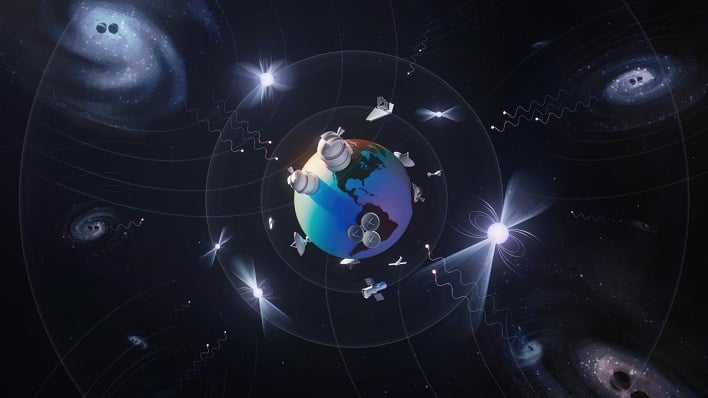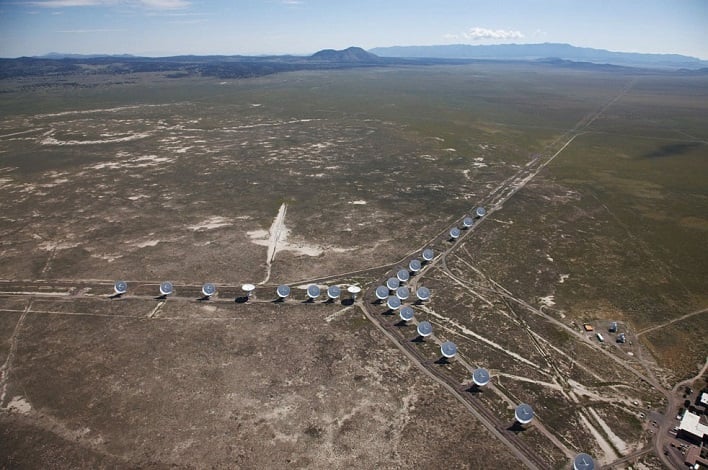Astronomers Finally Hear Universe's Gravitational Wave Background, Why It Matters

The large group of astrophysicists employed large radio telescopes in order to find evidence for gravitational waves that oscillate over periods of years to decades. Earlier results from North American Nanohertz Observatory for Gravitational Waves (NANOGrav) detected a timing signal similar to all the pulsars the team observed, but those were too faint to reveal its origin. The new 15-year study shows that the signal is "consistent with slowly undulating gravitational waves passing through our Galaxy," according to a press release on the NANOGrav website.
"This is key evidence for gravitational waves at very low frequencies," remarked Dr. Stephen Taylor from Vanderbilt University and current Chair of the collaboration. "After years of work, NANOGrav is opening an entirely new window on the gravitational-wave universe."
NANOGrav is hosting a briefing on the results and findings from its study at 1pm EST today and can be viewed via YouTube above.
The team used a technique that turned our sector of the Milky Way Galaxy into a very large gravitational-wave antenna by utilizing exotic stars called pulsars. The 15-year exploration collected data from 68 pulsars in order to form a detector called a pulsar timing array.
The decade and a half of observations were used from the Arecibo Observatory in Puerto Rico, the Green Bank Telescope in West Virginia, and the Very Large Array in New Mexico. This allowed NANOGrav to gradually increase the number of pulsars they observed.

According to Dr. Xavier Siemens, co-Director of the NANOGrav PFC, the large number of pulsars used helped the group to identify what they believe are the first signs of the correlation pattern that was predicted by Einstein's theory of general relativity.
"The gravitational-wave background was always going to be the loudest, most obvious thing to find," remarked Dr. Chiara Mingarelli, an astrophysicist at Yale University and member of NANOGrav. "This is really just the beginning of a whole new way to explore the universe."
The lowest frequencies emit a hum so loud that it could be originating from hundreds or thousands, possibly over a million, overlapping signals from "the cosmic merger history of supermassive black hole binaries," according to Dr. Mingarelli. Mingarelli added, "It sounds very sci-fi. But it's for real."
The new findings are important, because if the signal does originate from orbiting pairs of supermassive black holes, studying the gravitational wave background will also help scientists to better understand the evolutionary history of these systems and the galaxies around them. However, the signals could be originating from other sources, like hypothetical cracks in space-time known as cosmic strings or a remnant of the Big Bang.
While the results are exciting and intriguing, it is still too early to know what impact a gravitational wave background might have on future research. The new study can be read in full via its publication in The Astrophysical Journal Letters.
Top Image Credit: Tonia Klein/NANOGrav

